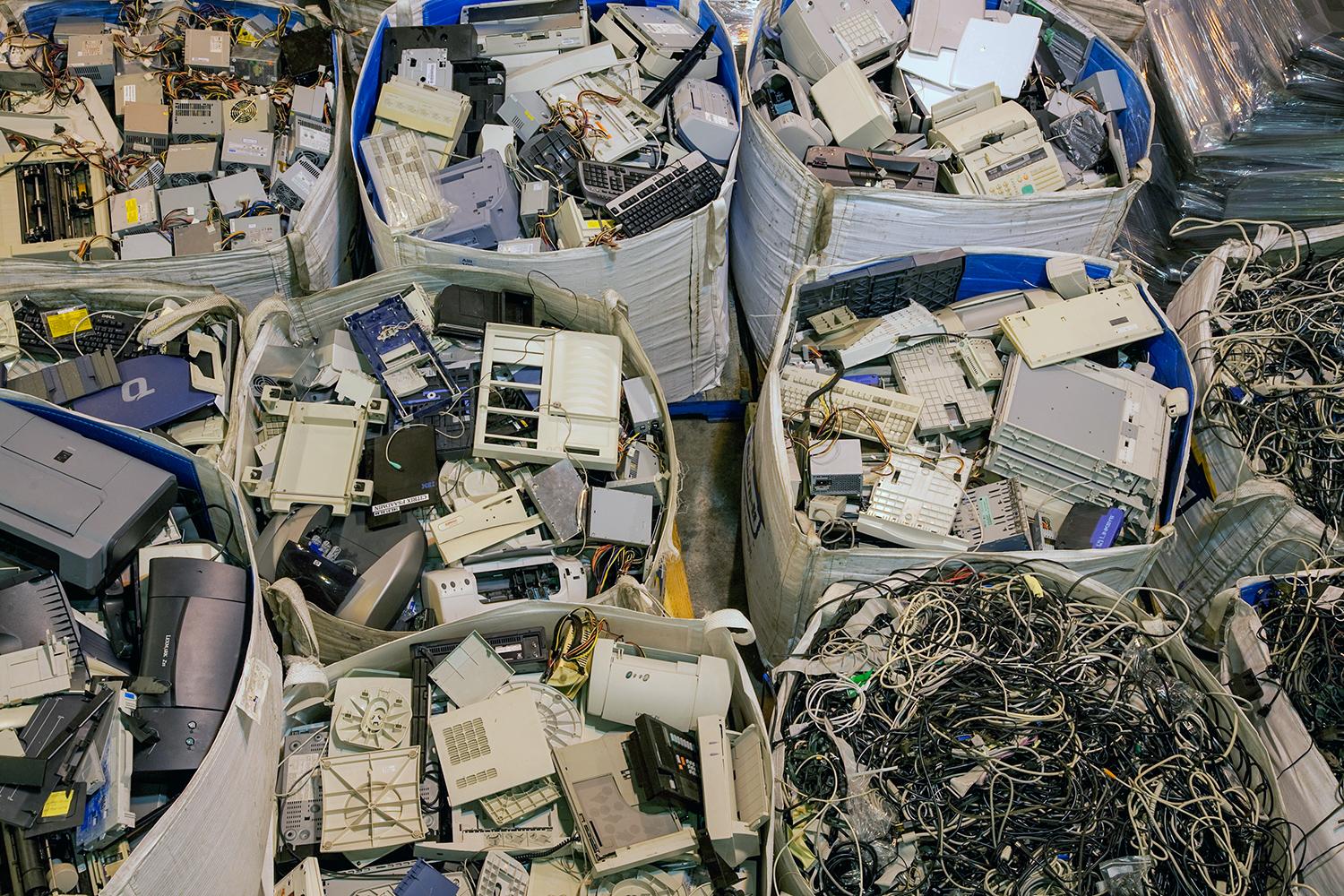

We don’t have to be artists to repurpose our electronics. In 2007, British Columbia, Canada became one of the first provinces to implement a vast e-cycling program by establishing 226 Return-It Depots across the province (you can find your nearest one here). They’ve collectively recycled 131,000 metric tons of electronic components and have kept 20.3 million devices out of landfills.
With a comprehensive system in place that guarantees electronics can easily and efficiently be converted into new components, there simply isn’t any reason not to recycle them. This thinking has led New York to follow B.C.’s lead and implement mandatory e-cycling in 2015. Such programs are beneficial to both society and the environment, but in encouraging discarders of electronics to simply move the unwanted item from one bin to another, they fail to address another potential alleviation of ecologically damaging manufacture and mining: the myriad phones and tablets lying in desk drawers, tube TVs tucked in attics, and 4-megapixel cameras laying in junk drawers across the world.
Many people are afraid of discarding computers, phones, and hard drives for fear that personal information may be recovered. Numerous companies specialize in recovering “deleted” data, which perpetuates the myth that all data can be recovered by any geek with some time on her hands. Reputable e-cycling programs can alleviate this fear, but it’s always best, for your own sound mind, to wipe electronics on your end before sending them off.
Doing so securely is easier than you might think. First thing first: before recycling electronics, back up anything valuable on an external hard drive or cloud server. Now, generally speaking, the more “passes” you take when wiping data—essentially replacing all that data with 0’s and 1’s—the more secure your old electronics are.
To do this on a Mac restart your computer while holding Command (⌘) + R. When a menu pops up, select “Disk Utility” and “Continue.” You can get to your Disk Utility without restarting, but doing so will not allow you to select your startup disk, which is what we need to do when wiping. Select your startup disk and click the “Erase” tab. The “Format” dropdown menu will allow you to select how secure of a wipe you want, and “Mac OS Extended (Case-sensitive, Journaled, Encrypted)” is the most secure, making seven passes in compliance with the strictest government standard. This process is the same for external hard drives, except you can skip the restart and select the appropriate drive in Disk Utility.
Formatting a Windows PC is generally a bit more complicated and can require a CD with the operating installed, but wikiHow has a number of helpful walkthroughs on formatting Windows 8 and earlier.
This process is doubly easy for a phone or tablet. Digital Trends can walk you through a number of ways to perform a factory reset on an iPhone or iPad, but the simplest option is in the Settings app. At the bottom of the “General” menu you’ll find a submenu called “Reset.” As the name suggests, this is what you want. You have a few options in here, but if getting rid of your phone, you’ll want to select “Erase All Content and Settings.” This option is more than secure enough.
On an Android phone, a similar backup and reset menu should be found in your phone’s settings. Follow along until you find an option that’s likely called “Factory Reset.” Alternately, wipe your phone remotely with Google’s Android Device Manager.
With the ability to securely wipe sensitive data, and a growing number of convenient options to donate your old electronics, there’s no reason why we should be continuing to clog our landfills with still-useful electronic components. We should all by now be repurposing our gadgets either to make newer computers or art.